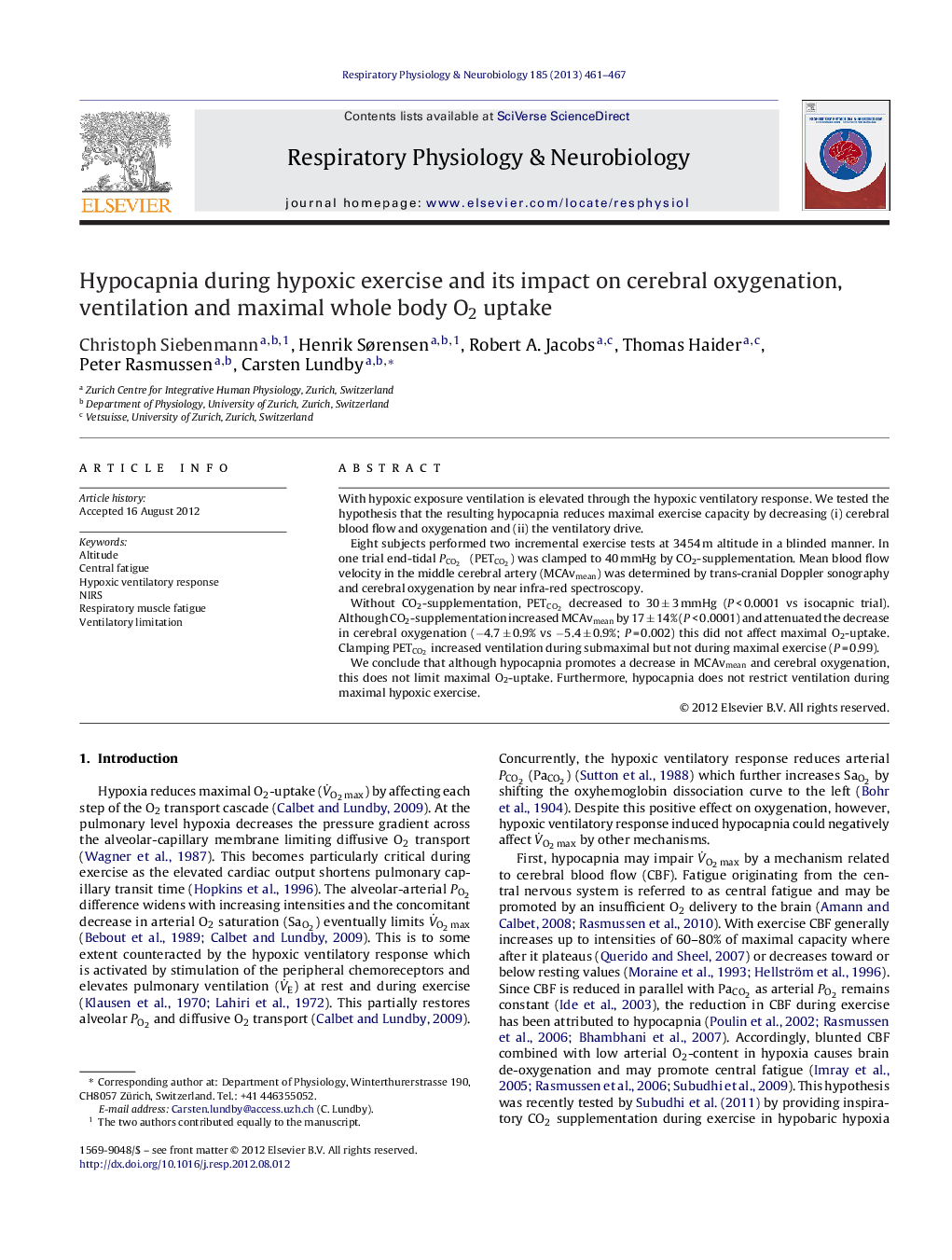| Article ID | Journal | Published Year | Pages | File Type |
|---|---|---|---|---|
| 2847304 | Respiratory Physiology & Neurobiology | 2013 | 7 Pages |
With hypoxic exposure ventilation is elevated through the hypoxic ventilatory response. We tested the hypothesis that the resulting hypocapnia reduces maximal exercise capacity by decreasing (i) cerebral blood flow and oxygenation and (ii) the ventilatory drive.Eight subjects performed two incremental exercise tests at 3454 m altitude in a blinded manner. In one trial end-tidal PCO2 (PETCO2)PCO2 (PETCO2) was clamped to 40 mmHg by CO2-supplementation. Mean blood flow velocity in the middle cerebral artery (MCAvmean) was determined by trans-cranial Doppler sonography and cerebral oxygenation by near infra-red spectroscopy.Without CO2-supplementation, PETCO2PETCO2 decreased to 30 ± 3 mmHg (P < 0.0001 vs isocapnic trial). Although CO2-supplementation increased MCAvmean by 17 ± 14% (P < 0.0001) and attenuated the decrease in cerebral oxygenation (−4.7 ± 0.9% vs −5.4 ± 0.9%; P = 0.002) this did not affect maximal O2-uptake. Clamping PETCO2PETCO2 increased ventilation during submaximal but not during maximal exercise (P = 0.99).We conclude that although hypocapnia promotes a decrease in MCAvmean and cerebral oxygenation, this does not limit maximal O2-uptake. Furthermore, hypocapnia does not restrict ventilation during maximal hypoxic exercise.
► The effect of hypocapnia during exercise in moderate hypoxia (3445 m) was examined. ► Two exercise trials, either with or without inspiratory CO2 supplementation. ► CO2 supplementation increased cerebral oxygenation but not maximal ventilation. ► Maximal O2 uptake was not affected by CO2 supplementation. ► Hypocapnia does not limit maximal exercise capacity at moderate altitude.
